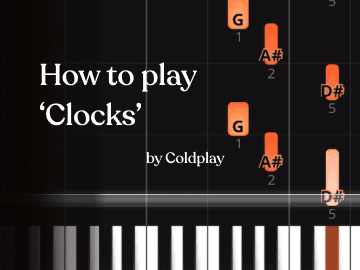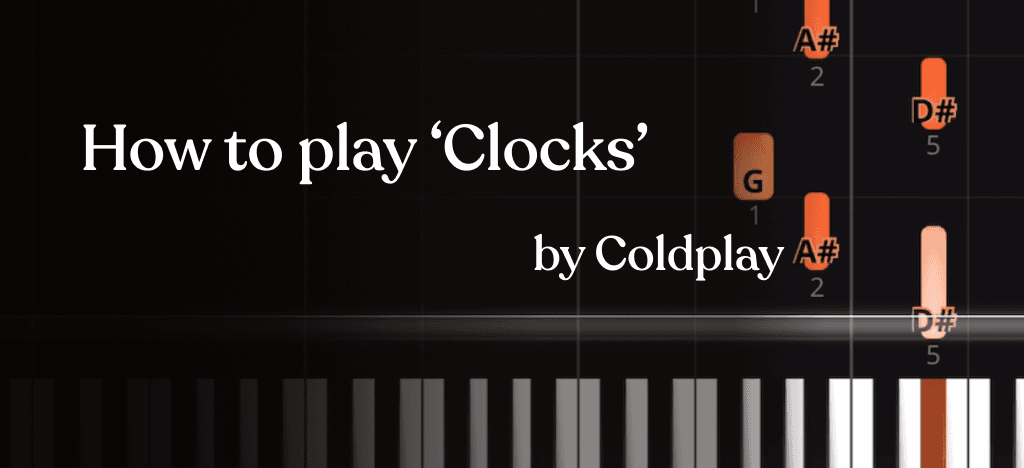Few piano riffs are as instantly familiar as the opening of Clocks. It feels dramatic and complex, but strip it down and you’re left with three shapes in the right hand and a couple of bass notes in the left. Learn how to play the intro without sheet music using a visual pattern you can follow - perfect for beginners.
- Artie's video guide: 'Clocks' piano intro with both hands.
- How to play the right hand riff of 'Clocks' on piano
- Adding the piano bass line
- Artie — the first AI piano teacher of its kind.
- What's next?
- More piano tips to explore
- FAQs: Playing 'Clocks' on piano
Artie's video guide: 'Clocks' piano intro with both hands.
Here’s how it looks in Artie, our AI piano teacher. Once you’ve practised both hands separately, have a go at playing along (Warning: this is at full speed)
How to play the right hand riff of 'Clocks' on piano
The intro to Clocks is made from four repeating patterns. Each one is eight notes long, and they all follow the same rolling rhythm. Once you’ve got the four under your fingers, you just loop them endlessly.
Pattern 1: D# – A# – G
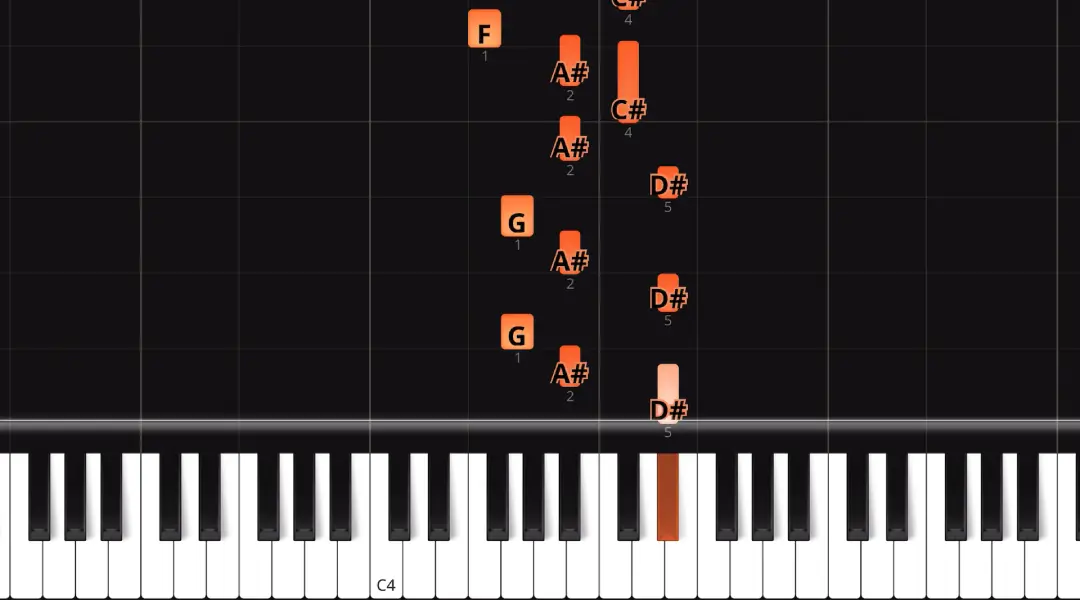
Fingering: 5 (pinky) – 2 (index) – 1 (thumb)
Sequence: 5-2-1-5-2-1-5-2
Notes: D# (5), A# (2), G (1)
This is the starting shape and the sound everyone recognises. Keep it steady — 8 even notes. When you’re first getting started, it’s a good idea to just repeat this pattern several times until it feels natural.
Patterns 2 + 3: C# – A# – F
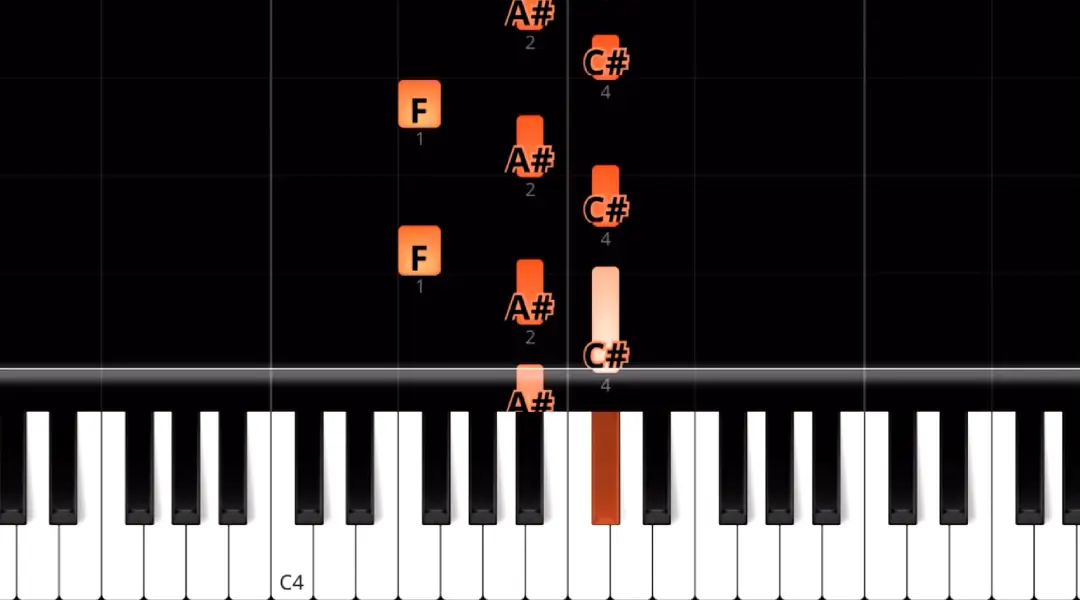
Fingering: 4 (ring) – 2 (index) – 1 (thumb)
Sequence: 4-2-1-4-2-1-4-2
Notes: C# (4), A# (2), F (1)
The top note drops to C#, the bottom drops to F, while your index stays anchored on A#. This shape repeats twice — it’s what gives the riff its rolling, hypnotic feel.
Pattern 4: C – G# – F
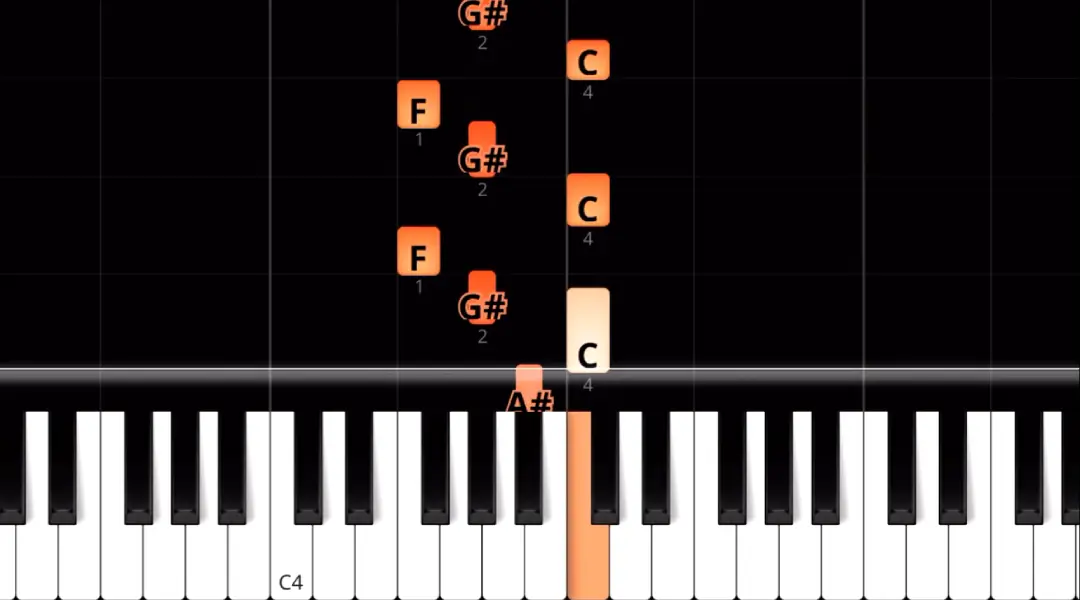
Fingering: 4 (ring) – 2 (index) – 1 (thumb)
Sequence: 4-2-1-4-2-1-4-2
Notes: C (4), G# (2), F (1)
Here the 4th and 2nd fingers move down to C and G#, while your thumb stays on F. This closes the loop and leads you back to Pattern 1.
Putting it together
Play the patterns in order:
Pattern 1 → Pattern 2 → Pattern 3 → Pattern 4 → back to Pattern 1.
That’s the complete right-hand loop of Clocks. Once it clicks, the riff will roll on almost automatically.
Adding the piano bass line
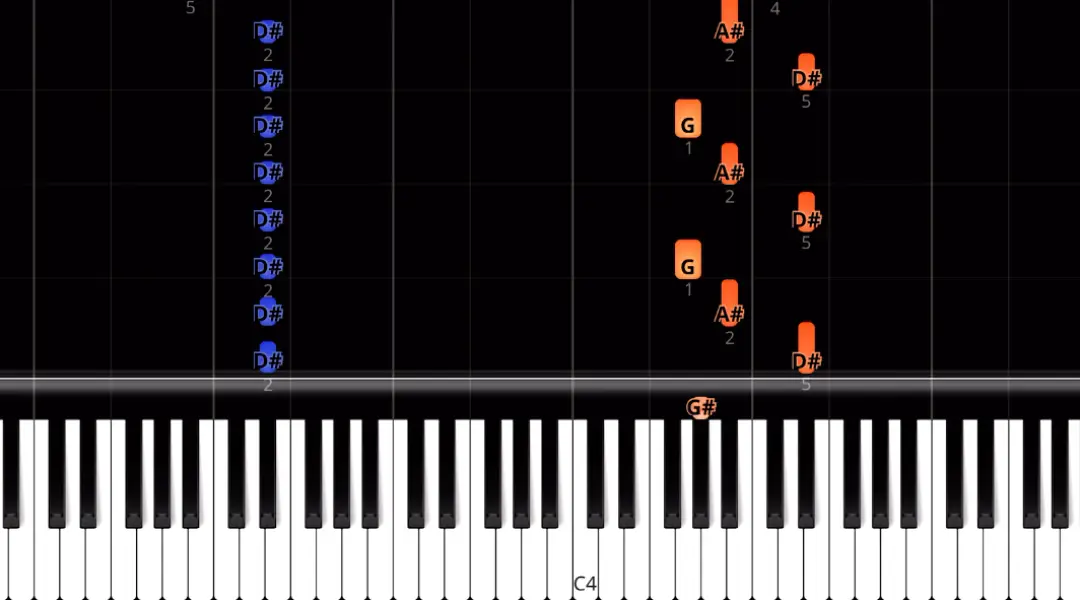 The bass line is just four notes on repeat:
The bass line is just four notes on repeat:
D# → A# → A# → F
Here’s the simplest and most comfortable way to finger it:
D# = 2 (index finger)
A# = 5 (pinky)
F = 1 (thumb)
Each one is played as a steady pulse, in sync with every right-hand note. So when your right hand is rolling through 5-2-1-5-2-1-5-2, your left hand is simply repeating the matching bass note eight times underneath.
That’s all there is to it — four notes looping over and over.
Artie — the first AI piano teacher of its kind.
The feeling of playing your first song is unforgettable. Now Artie makes it easier than ever: no sheet music, no complicated theory, just the music. 🎵
✅ Real-time feedback as you play
✅ Practice tools like loop, tempo control & wait mode
✅ 30 free songs to get you started
👉 Available now on the App Store (iOS):
https://apps.apple.com/us/app/artie-learn-piano-with-ai/id6746756746
What's next?
Once you’ve nailed the intro riff and bass, you don’t have to stop there. Two easy ways to make it sound bigger and closer to the full song:
Mirror the riff with the left hand. Put your left hand one octave below the right and play the same patterns for 2 cycles. It gives the riff more depth and makes it feel like Coldplay’s layered sound.
Add octaves in the bass. When you’re ready, play the bass notes as octaves — thumb on the higher note, pinky on the lower It adds power and makes the whole part feel more dramatic.
You can practise both of these in Artie, with the falling notes showing you exactly how they fit.
More piano tips to explore
Want to keep learning? Try these popular piano articles next:
FAQs: Playing 'Clocks' on piano
Can beginners play Clocks on piano?
Yes — the intro uses simple three-note shapes and repeating patterns, perfect for beginners.
Do I need to read sheet music to learn Clocks?
No — you can follow Artie’s falling-note visuals instead of notation.
Is Artie free to use?
Yes — you can start free with 30 songs included.
